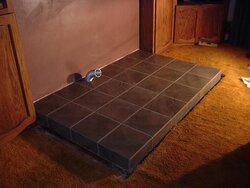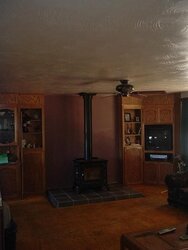Andy99 said:
Thanks That was a great explanation. I was planning on getting a thermometer as well as a Hearth rug and some sort of gloves so i dont have to worry about my wife burning her self trying to load it. I will also need some way to move the hot air towards the bedrooms. Im thinking some sort of small fan I just have to figure out how close to the stove to put it?
Andy, there are great little fans you put right on top of the stove and they run just on the heat with no electricity. There are two kinds, though, one for iron stoves and one for gas and soapstone. The gas/soapstone are more expensive (60 bucks?) because they have some extra mechanics inside to compensate for the fact that the stovetop doesn't get as hot.
FYI, I was perfectly comfortable last winter with my tiny Hearthstone Tribute stove in a 1,300 house with OK insulation, even at well below zero temps. However, "perfectly comfortable" for me is high 60s in my main room, lower in the kitchen and lower still in my unheated 2nd floor bedrooms. If, like some here, I felt like I needed 75 throughout the house, I'd have been miserable.
I also have to use my oil boiler for backup and to boost the heat in my office, which is off on a side of the house away from the stove. I still saved a boatload of money on heating.
DO NOT be casual and trusting about your firewood, though. Get it stacked in sun and wind as fast as possible. Find out what the guy means when he says "seasoned." If the wood hasn't been cut, split and stacked outside since early spring, it ain't gonna be seasoned by the time you need to burn it this winter. Cut, split and dumped in a big pile will only season the outer layer. Uncut and unsplit until just before it's delivered won't be seasoned. You can get by tihs winter with partially seasoned, but you will struggle and fight with it and need lots and lots of dry kindling and/or firelogs to get a fire hot enough to burn it.
Been there, done that, don't want to do it again, have become obsessive about getting my wood far enough ahead to stack it in the sun all spring summer and fall, at a minimum, and know that it's actually dry, and am working on trying to get a even year or two ahead.



